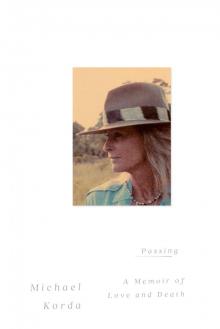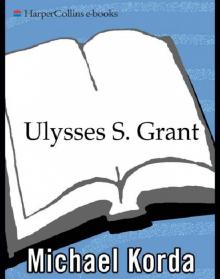- Home
- Michael Korda
Hero Page 17
Hero Read online
Page 17
As mentioned, biographers of T. E. Lawrence have tended to focus on his mother as the source of his many problems, including a general aversion to women (with some notable exceptions); a morbid fear of sexual contact, even of physical touch; a self-punishing spirit; and a refusal to accept the rewards that he had earned. Lawrence himself certainly expressed the somewhat extreme opinion that it would have been better for his parents if he and his brothers had never been born. “They should not have borne children” was his final judgment on the matter, based on the deep psychological and social gulf between them, which, he supposed, was responsible for the painful conflict he felt within himself.
It is understandable that Sarah has received greater attention (and blame) than Thomas from those who have written about T. E. Lawrence—she lived for nearly a quarter of a century after her famous son’s death, and for forty years after Thomas Lawrence’s death, so that many of Lawrence’s friends met her, and were impressed by her strength of character. Lawrence’s father, by contrast, died before his son had achieved a kind of apotheosis as a hero and a worldwide celebrity, and has therefore been relegated to an offstage role in the Lawrence family drama.
Of course to become a fully functioning adult any son must break free from his emotional dependence on his mother, a task made more difficult when the mother is as strong-willed as Sarah, and as reluctant to let her children go. In Ned’s case there is another, and perhaps more powerful, influence at work: the desire to be heroic; and that is, inevitably, centered on the father.
Although Thomas (Chapman) Lawrence’s presence in most books about T. E. Lawrence is ghostly, that was by no means the case in life. This is, perhaps unconsciously, partly Ned’s doing; at fifteen he wasalready a master dissimulator. In Lawrence’s own accounts of his childhood—the most important sources being his letters to Charlotte Shaw, wife of Bernard Shaw; and to Lionel Curtis, who became something of a soul mate of Lawrence’s after the war, when they were both fellows of All Souls College, Oxford–it is his mother toward whom he directs attention, both for forcing her strict religious ideas on her sons and for taking their father away from the lordly status he had enjoyed as a wealthy landowner and baronet. The fact that his father had willingly given up wealth and status for love, and may have been happy with his decision, was not one that Lawrence wanted to contemplate; nor did he wish to consider the fact that his mother exchanged life as a domestic servant for a lifelong relationship with a gentleman (admittedly living under a false name), a huge leap upward in status.
That is not to deny that it was a love match; it clearly was, and the fact that Sarah bore Thomas eight children argues for a fairly intense erotic attachment on both sides, however much guilt Sarah had to struggle with as a result—indeed she is said to have believed that she was risking damnation for herself in order to save him, and that their five living sons were proof that God might forgive her. Toward the end of her long life, she is said to have murmured over and over again, “God hates the sin, but loves the sinner.” This summed up her faith in salvation for herself, and it pained her deeply that Ned did not share her faith.
Even though Ned may have believed, from what he had overheard and misunderstood as a child, that Thomas Lawrence was not his real father, it was nevertheless not his mother’s approval that he sought. It was always approval from his father, and from the alternative father figures he would collect along the way—hence his briskly dismissing in advance the pride his mother would feel when she learned that he had been recommended for the Victoria Cross. His suggestion in his letter home was unmistakably that the Victoria Cross was exactly the kind of sentimental and popular tribute to valor his mother would like, but that his father, as a gentleman of superior education and breeding, would despise it as much as Lawrence did.
As Ned gained greater freedom to move about on his own, or with friends like Beeson, and took advantage of the latest racing bicycle to increase the distance he could travel and the amount of time he spent away from home, his interests became those that would appeal to Thomas Lawrence, rather than to his mother. His father—whose closest friend was the learned H. T. Inman, author of The Churches of Oxford—was after all far more likely than his mother to appreciate Ned’s brass rubbings and archaeological finds. Church architecture, medieval warfare, the classics—these were all areas in which Ned’s father was knowledgeable; and in some pursuits, like bicycling, woodworking, carpentry, and photography, Thomas was a patient instructor and quick to appreciate and praise Ned’s considerable abilities. In later life T. E. Lawrence would play a large part in building a house for his fellow archaeologists at Carchemish (in what is now Iraq), and carry out not only wood carving but quite elaborate and ambitious stone carving that convinced experts it was Hittite rather than his own work; he also took remarkable photographs under the most difficult conditions imaginable. Thus, Ned not only learned from his father but worked hard to please him. Indeed, his first effort at carpentry and woodcarving was a finely finished book case he made for his father. Thomas Lawrence was not at all a distant offstage observer of the continuing dramatic confrontation between Sarah and Ned; instead he was a constant and much-admired presence in Ned’s life.
It is not uncommon for an adolescent boy to fantasize that he is the offspring of somebody far more impressive than his putative father and that one day he will be recognized, by his noble and valorous feats, and restored to his rightful place—indeed this fantasy is the basis for many myths and children’s stories in every culture. In Ned’s case, this natural fantasy was made more intense by the suspicion that Thomas Lawrence might, in fact, not be his father. To this suspicion was no doubt added, later, the painful fact that Thomas had given up the station in society which would have enabled Ned and his brothers to go to Eton, like their father, rather than attend the City of Oxford High School as day boys, and would have confirmed them as “gentlemen,” members by birth of the upper class, unlike their mother.
As an adolescent, Ned had two contradictory but not uncommon reactions. One was to build up and even to exaggerate his father’s previous social status, emphasizing Thomas’s “lordly” ways and former wealth. The other was to impress his father by beating him at his own games. If Thomas Lawrence rode 100 miles in a day on his bicycle, Ned would ride (or claim to have ridden) 200. He would practice endlessly to become not just as good a shot as his father, but a better one; would become not just an amateur interested in church and castle architecture, but an expert, who claimed to have visited, studied, and sketched every significant castle in Britain and France. Clearly, part of this is familiar: the adolescent boy’s driving hunger for his father’s approval and praise. But there is also an element of rivalry, which Ned carried to enormous lengths, and which he clearly won, though it brought him no pleasure, and no release from his feelings.
That these feelings were strong and impossible for Ned to reconcile is demonstrated by a mysterious episode in which he ran away from home and joined the army. It is placed by different biographers as occurring sometime between 1904 and 1906, though 1904 seems more probable, since Ned would then have been sixteen, a more likely age for a boy to run away from home. Lawrence alluded to this episode several times in later life, but tried to keep it out of the biographies that were written during his lifetime, probably so as not to cause his mother more pain. Since Ned had no relatives to run away to—his mother’s relatives were unknown to him, and his father’s lived under a different name—he did perhaps the only thing he could think of to escape from what had become intolerable to him. Joining the army was a drastic and perhaps desperate decision, and almost certainly a cry for help.
In the Victorian-Edwardian era, service in the ranks of the British army was almost as low as you could fall on the social ladder; the “Tommy,” in his red coat, was still regarded, in the duke of Wellington’s famous words about his troops two generations earlier, as “the scum of the earth, recruited for drink!” The popular view of signing on as a soldier was captured by o
ne working-class mother who remarked that she would rather see her son dead “than wearing the red coat!”
As a result, the British army was something less than scrupulous in accepting recruits. The recruiting sergeant seems to have been willing to overlook Ned’s height and obvious immaturity, and signed him up as a boy soldier in the Royal Garrison Artillery. This antiquated branch of the Royal Artillery was similar to the U.S. Coast Artillery and served in forts built to protect major ports and naval facilities from attack. Boy soldiers were trained as trumpeters and buglers, but no special precautions were taken to separate them from adult soldiers in the barracks. Ned may have served in the Falmouth Garrison, on the south coast of Cornwall, but for how long is hard to know. He would later claim that he was there six to eight months, but this is very unlikely—his school friends did not remember any such long absence; nor did his surviving brothers. A more likely version is that he spent six to eight weeks there, or possibly only six to eight days. However short a time Ned served in the army, though, it was not an experience he would ever forget. The brutality, the foul language, the rough banter about sex, the fistfights, the drunken brawling on weekends—none of these can have been easy for a child of Sarah’s to endure, even for a few days. Interestingly enough, he claimed not to have minded the discipline, which in those days was rough-and-ready at the hands of noncommissioned officers of the old school.
His father, possibly at Ned’s urgent pleading, moved quickly to buy him out of his enlistment, a recognized practice in those days. Thomas Lawrence not only managed to get Ned out of the army but may also have managed to erase the whole episode from the army’s files. Thomas demonstrated more skill at facing down the army bureaucracy than he gets credit for, and obviously knew how to resume the role of a gentleman with friends in high places when he had to.
This family crisis—no other word will do—evidently also led Thomas and Sarah, however reluctantly, to reconsider how to deal with their brilliant and difficult second son, who, it was now quite evident, was going to require very different treatment from the other four boys. It is not hard to see here too the evidence of the father’s quiet authority in persuading Sarah that this particular colt needed to be ridden on a lighter rein. Overthe next two years, a number of changes were made, all of them intended to give him greater freedom. His bicycling trips became longer and more extended; the peculiarities of his vegetarian diet became a pretext for his skipping family meals; he would eventually be allowed to switch from preparation for a mathematics scholarship at the university, which he hated, to history, which was more to his liking; and finally, less than two years after he had run off to join the army, his parents built him a small cottage in the garden at 2 Polstead Road, which allowed him to live separately from the rest of the family.
This was obviously a large concession to a son who had demonstrated just how far he was willing to go in placing himself beyond his mother’s reach. T. E. Lawrence later claimed that he had actually built the cottage himself, but his account was contradicted by his mother, and seems unlikely—the cottage (which still stands) not only is attractive but shows every evidence of skilled professional construction, especially in the steeply countered cathedral roof, rising to a solid central brickwork chimney. Given his own skills, Ned surely helped with the woodwork and the interior; the lines of the exterior woodwork are very elaborate and fanciful indeed for a simple cottage, and may show his hand and imagination at work. Although the cottage was explained away as a place for Ned to study in once he had switched to history and become an undergraduate at Oxford, it seems in fact to have been designed from the outset for him to live in, with a fireplace, a stove, running water, electric light, and “a house telephone.” It is impossible not to see this arrangement as a victory over his mother, giving him the ability to come and go without supervision, freeing him from her insistence on knowing what he was doing at all times, and giving him complete privacy—an unusual, indeed enviable situation for a boy of eighteen or nineteen living at home at that time!
Ned’s decision to switch from mathematics to history is probably a case of following his own growing interests—but more than that, it reflects his impatience with abstract learning, and with any subject having clearly defined rules. He appears to have learned languages, for example, instinctively, by talking and by trial and error, but without making any attempt to master and memorize tedious grammatical rules, which bored him. He was a familiar and difficult figure in academic life: the brilliant young man with rather too many interests, who resists learning the basics of anything thoroughly, and who skates by at examination time on a combination of omnivorous reading, strong opinions, and verbal dexterity. As a result, Ned’s entrance to Oxford was neither as easy nor as automatic as it might have been.
In the summer of 1906, when Ned was eighteen and had only one more year to spend in school, he made his first trip abroad, with his friend Beeson—another big step in the untying of his mother’s apron strings, though he would try to make up for that by the length and detail of his letters home. After taking the Oxford Local Examinations, a prerequisite for entering Oxford University, he set off on a two-week cycling tour of Brittany, using Dinard, where the Lawrence family was still remembered with fond feelings, as his home base. In the end, his friend Beeson (whose nickname was “Scroggs”) went home before Ned did, so he spent almost two weeks more touring by himself.
Ned’s letters home are remarkable, and not just for their length and their amazingly descriptive detail, but also for his evident determination to hide his own feelings from his mother. The letters were meant to be read by the whole family, and are affectionate enough in tone, but they also exude a certain steely detachment and distance, which may not have escaped his mother’s notice. Certainly they are very unlike the monosyllabic, dutiful letters that most schoolboys send home, and while the intelligence, power of observation, and insight they demonstrate would astonish and even alarm most parents, they are also a bit chilling. A single surviving earlier letter from Ned to his mother, from Colchester, when he and his father were on a cycling trip in 1905, is signed, “Love to yourself,” but perhaps significantly the letters from the 1906 trip, with a couple of exceptions, are mostly signed, “With love to all,” or, “With love to everybody,” or they simply end without any closing at all.
Two other things are noticeable in the letters. The first is that Ned’s commitment to a vegetarian diet was apparently rather less strict abroad than at home, since he boasts of having tried some of everything on the prix fixe luncheon menu at the Grand Hôtel de l’Europe in Dinan, which included sardines, fowl, cold meats, and hash. Second, he was scrupulously careful about accounting for every penny (and, indeed, halfpenny) he spent.
A longish letter, written on August 14 to his mother, runs to some 1,400 words, and includes two excellent architectural drawings. Almost all of it is about the Château de Tonquédec, with minute attention to the interesting details of the latrines, and it reveals an astonishing knowledge of medieval building techniques. (In some respects, his letters home were notes for future works.) He also mentions that he has reached his highest speed to date on a bicycle—thirty miles an hour in high gear on the sand of a nearby beach—and feels he is fit enough to ride 100 miles a day for months. All this must have been of interest to his father (and is perhaps intended to impress him) but probably not to his mother, to whom the letter is addressed. Another letter, 2,300 words long, is mostly about the Château de la Hunaudaye; it reads like a learned guidebook, and contains a full-page detailed plan of the fortress, one of two in this series of letters home, done in pen and ink by Ned, which could hardly be improved on by a professional architect, and which illustrate not only his thorough knowledge of medieval architecture at this early age, but even more his understanding of medieval warfare. He knows why the fortress was built the way it was, and what its strengths and weaknesses were—in short, his is an expert’s view of how to defend or attack a fortified place, and how to make the b
est use of the topography in siting and building one.
It would be a mistake to leap from this to comparisons to the young Napoleon, who is said to have relied on his tactical instincts to win schoolyard fights; but much that is contained in young Ned’s letters to his family reads like a brilliant and insightful essay on medieval fortifications and warfare by a particularly gifted cadet at Sandhurst or West Point, and makes it easy to understand why T. E. Lawrence’s notes and dispatches from the field were read with such interest even at the level of the chief of the imperial general staff. His observation and grasp of significant details, his broad overview, and his crisply expressed conclusions are all in evidence here—the schoolboy demonstrates the same skill in writing reports and drawing maps as the temporary second-lieutenant and acting staff captain would demonstrate eight years later, though one guesses that none of it is what his mother wanted to hear.
His knowledge of medieval clothing and armor is, if anything, even more impressive, perhaps even daunting. The unfamiliar words flow by on page after page: maniple, chausable, dalamtic, stoles, alb (but no tunic, Ned observes), on a bishop’s effigy; jupon, genouillières, jambs, sollerets, on the effigy of Tiphaine du Guesclin, widow of Jean V de Beaumanoir, which exhibits a rare combination of fifteenth-century haute couture and armor—Ned meticulously counts the twenty-two round buttons on her jupon, notes that her spurs have rowels, and describes her face and hairstyle in detail. These letters seem very serious and almost self-consciously erudite, as if Ned was already practicing to write essays for his tutor, or to write his thesis, which would also be on the subject of medieval military architecture, with plans, drawings, and photographs by himself.

 Passing
Passing Another Life
Another Life Clouds of Glory
Clouds of Glory Hero: The Life and Legend of Lawrence of Arabia
Hero: The Life and Legend of Lawrence of Arabia Cat People
Cat People Hero
Hero With Wings Like Eagles: A History of the Battle of Britain
With Wings Like Eagles: A History of the Battle of Britain Ulysses S. Grant
Ulysses S. Grant